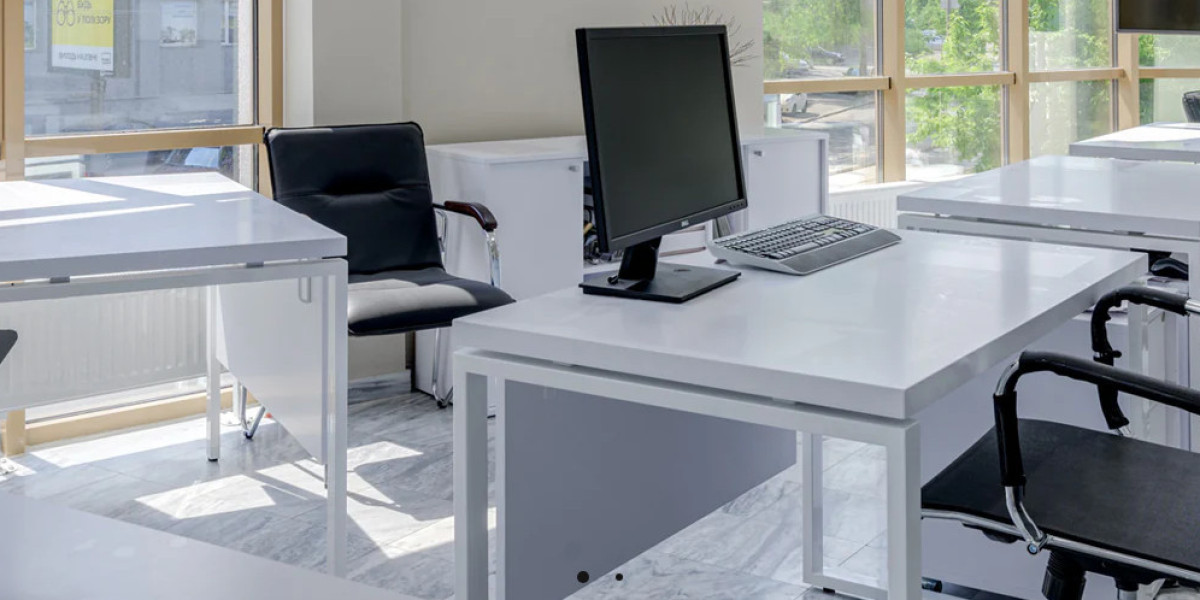Flexible office furniture is crucial for hybrid work environments, where employees alternate between working in the office and remotely. The key is to design spaces that accommodate varying work styles and preferences while being adaptable to changing needs. Here’s how to select and arrange flexible office furniture to support a hybrid work model:
**1. Modular Workstations
- What It Is: Furniture systems that can be reconfigured easily to suit different tasks and team sizes.
- Examples:
- Adjustable Desks: Desks that can be adjusted for sitting or standing to accommodate different working styles.
- Modular Desks: Desks that can be combined or separated to create individual or collaborative workspaces.
**2. Collapsible and Stackable Furniture
- What It Is: Furniture that can be folded, stacked, or otherwise compacted for easy storage and reconfiguration.
- Examples:
- Folding Tables and Chairs: Easy to set up and store, ideal for changing meeting room configurations.
- Stackable Chairs: Useful for creating flexible meeting or lounge areas that can be adjusted based on current needs.
**3. Adjustable and Ergonomic Seating
- What It Is: Chairs that offer a range of adjustments to suit different body types and preferences.
- Examples:
- Ergonomic Chairs: Adjustable in height, backrest angle, and lumbar support to accommodate different users.
- Task Chairs: Chairs designed for a variety of tasks, with features like adjustable arms and seat depth.
**4. Collaborative and Breakout Spaces
- What It Is: Furniture designed to foster collaboration and informal meetings, enhancing the flexibility of workspaces.
- Examples:
- Modular Seating: Sofa modules or lounge chairs that can be rearranged for group discussions or casual meetings.
- Portable Whiteboards: Mobile whiteboards that can be moved to different areas for brainstorming sessions.
**5. Multi-Purpose Furniture
- What It Is: Furniture designed to serve multiple functions, reducing the need for additional pieces.
- Examples:
- Convertible Desks: Desks that can switch from a traditional desk to a standing desk or a collaborative table.
- Bench Seating with Storage: Benches that provide seating and include storage compartments for office supplies or personal items.
**6. Smart Furniture Solutions
- What It Is: Furniture integrated with technology to enhance functionality and user experience.
- Examples:
- Wireless Charging Desks: Desks with built-in charging pads for electronic devices.
- Integrated Power Sources: Desks and meeting tables with built-in outlets and USB ports for easy connectivity.
**7. Space-Saving Designs
- What It Is: Furniture that helps maximize the use of available space in flexible work environments.
- Examples:
- Wall-Mounted Desks: Desks that can be folded up against the wall when not in use.
- Compact Storage Solutions: Slim, vertical storage units that fit into smaller spaces without cluttering the area.
**8. Adjustable Partitions
- What It Is: Dividers that can be repositioned to create private work areas or open spaces as needed.
- Examples:
- Mobile Partitions: Panels on wheels that can be moved to reconfigure office layouts quickly.
- Adjustable Screens: Screens that can be adjusted to create varying levels of privacy and separation.
**9. Flexible Conference and Meeting Furniture
- What It Is: Furniture designed to accommodate varying group sizes and meeting formats.
- Examples:
- Extendable Tables: Tables that can be extended or retracted to adjust for different meeting sizes.
- Modular Seating: Seating arrangements that can be adapted for formal presentations or casual discussions.
**10. Remote Work Integration
- What It Is: Furniture that supports employees working from home as well as in the office.
- Examples:
- Home Office Furniture: Compact, stylish, and ergonomic furniture for remote workspaces that complement office furniture.
- Unified Design Aesthetics: Ensuring that home office furniture aligns with office design for a cohesive look and feel.
**11. Flexible Lighting Solutions
- What It Is: Lighting that can be adjusted to suit different tasks and environments.
- Examples:
- Adjustable Task Lighting: Lamps with flexible arms and brightness controls for various work tasks.
- Dimmable Overhead Lights: Lighting that can be adjusted to create a comfortable work environment.
**12. Acoustic Solutions
- What It Is: Furniture and design elements that help manage noise levels in shared and flexible spaces.
- Examples:
- Acoustic Panels: Panels that absorb sound and reduce noise levels in open office environments.
- Sound-Absorbing Furniture: Furniture with built-in acoustic properties to enhance privacy and focus.
Conclusion
Choosing flexible office furniture for hybrid work environments involves selecting pieces that can adapt to different needs, support a variety of work styles, and maximize space efficiency. By incorporating modular, multi-purpose, and adjustable furniture solutions, you can create a dynamic workspace that enhances productivity and accommodates the evolving nature of modern work.








